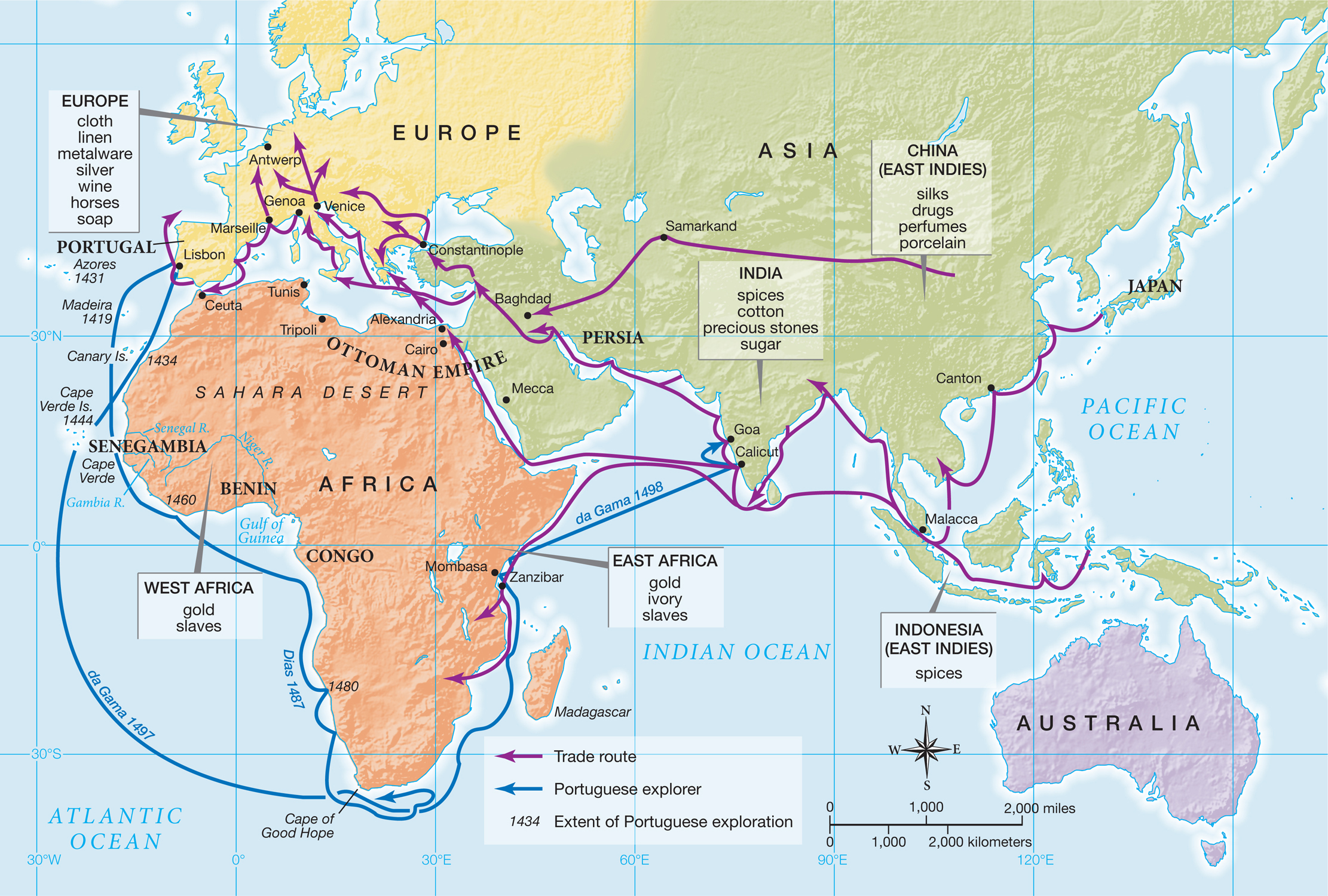The American Promise:
Printed Page 27
The American Promise Value
Edition: Printed Page 26
Mediterranean Trade and European Expansion
From the twelfth through the fifteenth centuries, spices, silk, carpets, ivory, and gold traveled overland from Persia, Asia Minor, India, and Africa and then funneled into continental Europe through Mediterranean trade routes (Map 2.1). Dominated primarily by the Italian cities of Venice, Genoa, and Pisa, this lucrative trade enriched Italian merchants and bankers, who fiercely defended their near monopoly of access to Eastern luxuries. The vitality of the Mediterranean trade offered merchants few incentives to look for alternatives. New routes to the East and the discovery of new lands were the stuff of fantasy.

Preconditions for turning fantasy into reality developed in fifteenth-
Understandably, most Europeans perceived the world as a place of alarming risks where the delicate balance of health, harvests, and peace could quickly be tipped toward disaster by epidemics, famine, and violence. Most people protected themselves from the constant threat of calamity by worshipping the supernatural, by living amid kinfolk and friends, and by maintaining good relations with the rich and powerful. But the insecurity and uncertainty of fifteenth-
In European societies, exploration promised fame and fortune to those who succeeded, whether they were kings or commoners. Monarchs such as Isabella hoped to enlarge their realms and enrich their dynasties by sponsoring journeys of exploration. More territory meant more subjects who could pay more taxes, provide more soldiers, and participate in more commerce, magnifying the monarch’s power and prestige. Voyages of exploration also could stabilize the monarch’s regime by diverting unruly noblemen toward distant lands. Some explorers, such as Columbus, were commoners who hoped to be elevated to the aristocracy as a reward for their daring achievements.
Scientific and technological advances also helped set the stage for exploration. The invention of movable type by Johannes Gutenberg around 1450 in Germany made printing easier and cheaper, stimulating the diffusion of information, including news of discoveries, among literate Europeans such as Isabella and Columbus. By 1400, crucial navigational aids employed by maritime explorers like Columbus were already available: compasses; hourglasses; and the astrolabe and quadrant, which were devices for determining latitude. Although many people throughout fifteenth-